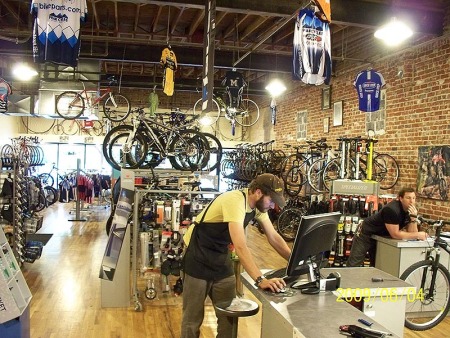 At the end of a strenuous training ride or race, cyclist quickly reach for their recovery drink with the intention of refueling their body to prepare for the next round of hard cycling efforts. But what exactly is the goal of “recovery”? What are the best ways to recover in the training cycle? And, is there a way to accelerate recovery? Here’s a hint: recovery is not just drinking a carb loaded fluid after a hard effort.
At the end of a strenuous training ride or race, cyclist quickly reach for their recovery drink with the intention of refueling their body to prepare for the next round of hard cycling efforts. But what exactly is the goal of “recovery”? What are the best ways to recover in the training cycle? And, is there a way to accelerate recovery? Here’s a hint: recovery is not just drinking a carb loaded fluid after a hard effort.
Think of it this way, according to Rowe and King, “all effective training plans are structured and involve carefully placed recovery phases. A recovery phase can be a single day in the middle of a training block, or up to a week to really recovery and peak before a specific event. However, a common mistake made by cyclists is to repeat the same training, week after week, all season or all year round. It is the progression and overload, paired with recovery that leads to improvement. Without allowing yourself to recover, you will stop making progress, increase the risk of injury and illness, run the risk of overtraining.”
Here’s what’s happening when you train – you stress your body and break down your muscles. According to Joe Friel, endurance coach and author, “recovery days come in two forms: days of complete rest (“passive” recovery) and days with light exercise (“active” recovery). Passive recovery is generally best for novices. If they take the day off from exercise the day after a workout they will improve greatly. For the pure novice any form of training may very well be too stressful. As fitness improves, the recovery days are better spent doing some very light exercise. For the novice this could be light cross training in a sport such as swimming or cycling. Novice runners should never run on a recovery day. It’s simply too stressful even for somewhat advanced novices. The advanced, experienced athlete is best advised to train lightly on a recovery day as this maintains some of the most basic gains made in previous, harder sessions, especially economy of movement and aerobic endurance. Given the advanced athlete’s high level of fitness, such a light training session is not stressful. But it must be easy. Making these sessions too hard is the most common mistake in training at this level. Regardless of one’s level of experience or fitness, the harder the hard workouts, the easier one’s recovery days should be.”
Is there a way to accelerate recovery? Whether recovering from a hard training effort or as part of your training cycle, there are quite a few actions you can take to facilitate quicker adaptations beginning with your ride style. At the completion of your ride, be mindful to cool down appropriately. Spin your legs out and get your heart rate down. Immediately following your ride, Carrie McCusker, an endurance coach, recommends to “restore fluid and electrolyte balance, to replenish muscle and liver glycogen stores, and to stimulate protein synthesis. You can accomplish this by consuming carbohydrates, protein and fluids within thirty to sixty minutes of finishing your workout. Based on research data, athletes are encouraged to utilize this “glycogen window” to restore the muscles. It is particularly important for glycogen-depleting workouts, those that are longer than two hours or those with high intensity efforts, or if the day involves two or three workouts.”
Included in the recovery process is ongoing proper nutrition, sleep, rolling or massage, stretching, compression, and low intensity activity. Compression gear has risen to new heights in recent years. Medical compression stockings have been used to treat poor blood flow for many years. Recently, the technology has been made available to cyclist of all levels. While the many claim it is difficult to prove that an immediate performance gain from wearing compression garments, many do claim that it lowers perceived muscle soreness the day after a big day on the bike and they can reduce the swelling of legs after prolonged sitting.
There are lots of resources online for you to learn about recovery best-practices and get the fuel and equipment you need for adequate recovery. Bikeparts.com has lots of different types of nutritional supplements all in one place as well as bikes, bike parts, cycling accessories, and cycling apparel that can help you with your recovery training. And if you just want to talk to an expert, stop into Peak Cycles Bicycle Shop in Golden, Colorado to talk to one of our competitive cyclists. Have fun with your summer training!


[…] Ride Hard – Recovery Harder: Ways to Speed Up Recovery […]
[…] to cool down appropriately. Spin your legs out and get your heart rate down. Consider wearing compression garments or using a nutritional aid to accelerate the recover process. After all, the fast you recover, […]